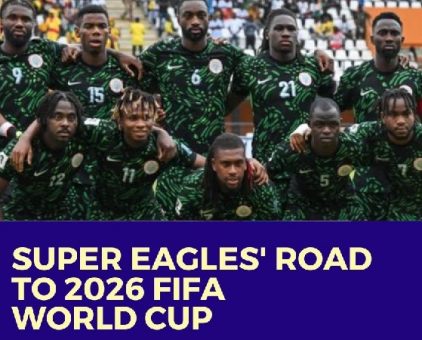Nigeria’s quest to qualify for the 2026 World Cup took a serious hit after they were held to a disappointing home draw by Zimbabwe.
A sluggish start to their qualifying campaign, where they managed just three points from a possible 12, left them with little margin for error. To keep their qualification hopes alive, they needed to secure all 12 points available during this international window.
They began positively with a 2-0 victory over Rwanda, offering a glimmer of hope. However, the draw against Zimbabwe represents a setback, leaving them six points adrift of the automatic qualification spot.
Despite the growing challenge, all hope is not lost. Key factors, including improved consistency and favorable results elsewhere, could still revive Nigeria’s World Cup ambitions.
Current Qualification Structure:
For the 2026 World Cup, Africa has been allocated nine direct qualification spots, with an additional opportunity for a tenth team through an intercontinental playoff. Each group winner secures direct qualification, while the four best runners-up will compete for the playoff spot.
Nigeria’s position:
After six matches, Nigeria has accumulated seven points, placing them fourth in Group C. South Africa leads the group with 13 points. The Super Eagles’ recent 1-1 draw against Zimbabwe further complicated their qualification prospects.
Path to qualification:
Maximize Points in Remaining Matches: Nigeria must aim to win all their remaining fixtures to accumulate a total of 28 points. This aggressive approach is essential to challenge South Africa for the top spot or to position themselves as one of the best runners-up.
Capitalize on South Africa’s Potential Point Deduction: Reports indicate that South Africa may face a points deduction for fielding an ineligible player, Teboho Mokoena, who had accumulated two prior yellow cards. If enforced, this could reduce their lead and provide Nigeria with an opportunity to close the gap.



















Add Comment